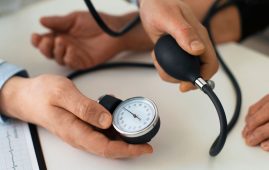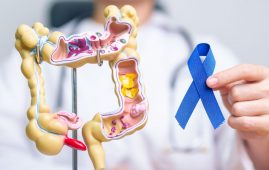

According to a new research by Penn State College of Medicine, the 150 minutes of moderate to vigorous aerobic activity per week that is advised by the U.S. Department of Health and Human Services can dramatically reduce liver fat. Exercise reduces liver fat in individuals with non-alcoholic fatty liver disease, in a way that is clinically significant, according to the team’s meta-analysis of 14 earlier research works.
Although earlier research had suggested the health benefits of exercise, it had not identified the precise volume of exercise required to produce a clinically significant improvement. “Our findings can give physicians the confidence to prescribe exercise as a treatment for non-alcoholic fatty liver disease,” said Jonathan Stine, associate professor of medicine and public health sciences, and hepatologist at Penn State Health Milton S. Hershey Medical Center. “Having a target amount of physical activity to aim for will be useful for health care and exercise professionals to develop personalized approaches as they help patients modify their lifestyles and become more physically active.”
Nearly 30% of the world’s population suffers from non-alcoholic fatty liver disease (NAFLD), which over time can result in cirrhosis, liver scarring, and cancer. There is no effective treatment or licensed drug for this widespread ailment, but research has shown that exercise can enhance patients’ quality of life, physical fitness, and liver fat.
Stine examined 14 papers that included 551 NAFLD patients who took part in randomized, controlled trials that included exercise treatments. Age, sex, body mass index, change in body weight, adherence to the exercise routine, and MRI-measured liver fat were among the variables his team looked at when pooling data from all the trials. Stine claims that past studies had not determined the “dose” of exercise that was necessary to enable patients with NAFLD to experience clinically significant improvement, which is defined as at least a 30% relative reduction in liver fat as determined by magnetic resonance imaging (MRI).
The investigation of the relationship between exercise training and a clinically significant reduction in liver fat was the study’s main objective. The team discovered exercise training was 3 1/2 times more likely than standard clinical care to provide a clinically meaningful treatment response (greater than or equal to 30% relative reduction in MRI-measured liver fat), independent of weight loss.
The researchers identified the ideal “dose” of exercise to generate clinically significant reductions in liver fat in its secondary analysis. In comparison to patients who were given lower amounts of exercise, only 26% of patients who were given higher than or equal to 750 metabolic equivalents of task (for instance, 150 minutes per week of brisk walking) experienced a significant response to treatment.
The American Gastroenterological Association and the European Association for the Study of the Liver both prescribe the same level of physical activity. The American Journal of Gastroenterology reported the findings.
In early-phase NASH treatment trials testing drugs that inhibit fat synthesis, Stine claims that when this quantity of exercise was recommended, clinically relevant reductions in MRI-measured liver fat were made at a rate comparable to that.
“Exercise is a lifestyle modification, so the fact that it might match the ability of in-development therapeutics to achieve the same outcome is significant,” said Stine, a Penn State Cancer Institute researcher. “Clinicians counseling patients with NAFLD should recommend this amount of activity to their patients. Brisk walking or light cycling for 1/2 an hour a day five times a week is just one example of a program that would meet these criteria.”
More study, especially controlled randomized trials, is required, according to Stine, in order to validate their findings and compare the effects of various exercise levels side by side.
more recommended stories
 Children’s Health in the United States is Declining!
Children’s Health in the United States is Declining!Summary: A comprehensive analysis of U.S..
 Emotional Processing for Chronic Pain Relief
Emotional Processing for Chronic Pain ReliefA groundbreaking clinical trial led by.
 Egg White Proteins for Hypertension
Egg White Proteins for HypertensionEgg white proteins for hypertension have.
 Limited Health Care Access During Disasters Delays Colorectal Cancer Diagnoses
Limited Health Care Access During Disasters Delays Colorectal Cancer DiagnosesNatural disasters like Hurricanes Irma and.
 Ethical Issues in Human-AI Relationships
Ethical Issues in Human-AI RelationshipsAs artificial intelligence becomes increasingly lifelike.
 Vegetarian Diets and Healthy Aging: Does Diet Quality Make a Difference?
Vegetarian Diets and Healthy Aging: Does Diet Quality Make a Difference?Vegetarian diets are widely recognized for.
 Mental Health Pros May Miss Bulimia Signs – Here’s Why
Mental Health Pros May Miss Bulimia Signs – Here’s WhyA recent study by the University.
 New Study Questions Fluid Restriction in Heart Failure Management
New Study Questions Fluid Restriction in Heart Failure ManagementA groundbreaking study presented at the.
 Semen Quality as a Predictor of Long-Term Health
Semen Quality as a Predictor of Long-Term HealthA landmark study published in Human.
 Who Should Take Supplements? Experts Weigh In
Who Should Take Supplements? Experts Weigh InA comprehensive review published in The.

Leave a Comment